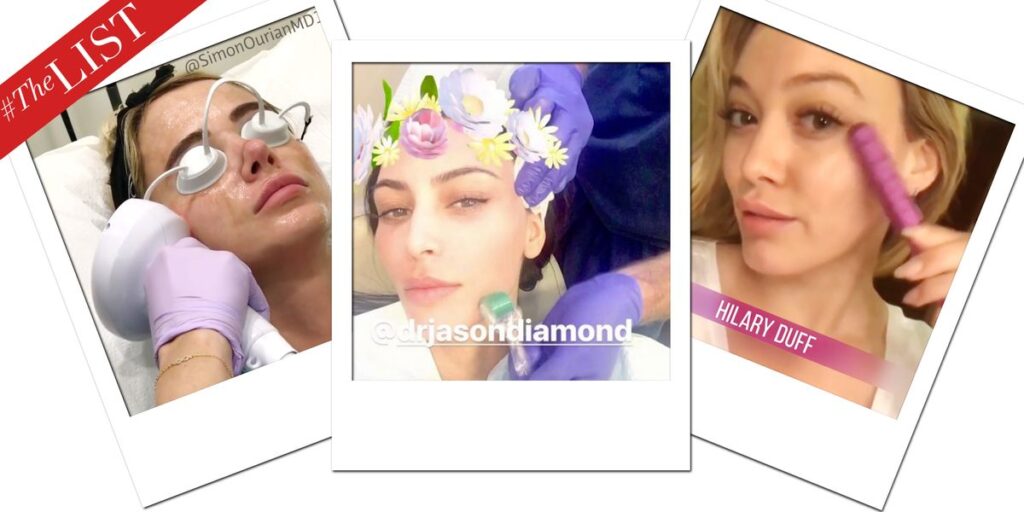Are you ready to embrace your true beauty and feel confident in your own skin? Look no further than the world of plastic surgery in NYC. With a multitude of options and procedures available, you have the power to enhance your features and achieve the look you’ve always dreamed of. Whether you’re looking to reshape your nose, enhance your curves, or turn back the hands of time with a facelift, goals plastic surgery NYC is here to help you unleash your true beauty. Embark on this transformative journey and discover a version of yourself that you never thought possible.

This image is property of www.drfiorillo.com.
What is Plastic Surgery
Plastic surgery is a branch of medicine that focuses on the reconstruction, restoration, and enhancement of various parts of the body. It involves surgical procedures that can modify or improve a person’s physical appearance, as well as correct physical abnormalities. Plastic surgery can be performed on different areas of the body, such as the face, breasts, and body, with the goal of achieving a more desired aesthetic outcome.
Definition of plastic surgery
Plastic surgery is a specialty that uses surgical techniques to alter, restore, or enhance a person’s physical appearance. It encompasses a wide range of procedures that can address both cosmetic concerns and functional issues. These procedures may involve reshaping or resizing body parts, removing excess fat or skin, or reconstructing certain features to improve their form and function.
Types of plastic surgery procedures
There are various types of plastic surgery procedures available to address different issues and achieve specific aesthetic goals. Some common types of plastic surgery procedures include:
Facial procedures: These procedures focus on improving the appearance of the face, such as facelifts, rhinoplasty (nose job), eyelid surgery, and chin augmentation.
Breast procedures: Breast augmentation, breast reduction, and breast lift are some of the commonly performed plastic surgery procedures to enhance or reshape the breasts.
Body contouring procedures: These procedures aim to improve the overall shape and appearance of the body. Examples include liposuction, tummy tuck, and body lift surgeries.
Skin rejuvenation procedures: These procedures focus on improving the texture, tone, and overall quality of the skin. Popular options include laser skin resurfacing, chemical peels, and injectable treatments like Botox and dermal fillers.
Choosing the Right Plastic Surgeon
Choosing a qualified and experienced plastic surgeon is crucial to ensure the best possible outcome and reduce the risk of complications. Here are some important factors to consider when selecting a plastic surgeon:
Importance of selecting a qualified surgeon
Selecting a qualified plastic surgeon is essential for your safety and the success of your procedure. Plastic surgery requires a high level of expertise and skill, as it involves delicate surgical techniques. By choosing a qualified surgeon, you can have peace of mind knowing that they have received the necessary education, training, and certification to perform plastic surgery procedures.
Factors to consider when choosing a plastic surgeon
When choosing a plastic surgeon, it is important to consider several factors. Look for a surgeon who specializes in the specific procedure you are interested in, as specialized expertise can greatly impact the outcome. Additionally, consider the surgeon’s level of experience, reputation, and the quality of their before-and-after photos. It is also crucial to feel comfortable and trust your surgeon, as open communication and a good rapport are important for a successful surgical journey.
Checking the surgeon’s credentials
Before finalizing your decision, it is essential to check the plastic surgeon’s credentials. Ensure that the surgeon is board-certified by a recognized plastic surgery board, as this demonstrates their competence and adherence to high standards of patient care and safety. You can usually find information about a surgeon’s board certification on their website or by contacting their office directly.
Researching patient reviews and testimonials
reading patient reviews and testimonials can provide valuable insights into the experiences of others who have undergone plastic surgery with a particular surgeon. Online review platforms or the surgeon’s website may contain testimonials from past patients. Pay attention to both positive and negative reviews, as they can help you gain a more comprehensive understanding of the surgeon’s skills, patient satisfaction rates, and overall reputation.

This image is property of www.hollywoodreporter.com.
Common Plastic Surgery Procedures
Plastic surgery offers a wide range of procedures to address various aesthetic concerns and physical abnormalities. Here are some of the most common plastic surgery procedures:
Facial procedures
Facial procedures aim to enhance or rejuvenate the appearance of the face. Facelifts help to tighten sagging skin and smooth out wrinkles, while rhinoplasty can reshape the nose for improved facial harmony. Eyelid surgery can address excess skin or drooping eyelids, and chin augmentation can enhance facial proportions.
Breast procedures
Breast procedures are designed to enhance, reshape, or restore the appearance of the breasts. Breast augmentation involves the placement of implants to increase breast size and fullness. Breast reduction reduces the size of overly large breasts, while breast lift surgery raises and reshapes sagging breasts.
Body contouring procedures
Body contouring procedures focus on improving the shape and contours of the body. Liposuction removes excess fat deposits from specific areas, such as the abdomen, hips, thighs, or arms. A tummy tuck, or abdominoplasty, tightens the abdominal muscles and removes excess skin to create a firmer and more toned midsection. Body lift surgery targets multiple areas of the body, such as the abdomen, buttocks, thighs, and arms, to remove excess skin and lift sagging tissues.
Skin rejuvenation procedures
Skin rejuvenation procedures help enhance the quality, texture, and appearance of the skin. Laser skin resurfacing can reduce the appearance of wrinkles, scars, and pigmentation issues. Chemical peels involve the application of a chemical solution to the skin to exfoliate and reveal a fresher, smoother complexion. Injectable treatments like Botox and dermal fillers can address fine lines, wrinkles, and volume loss, providing a more youthful appearance.
Benefits of Plastic Surgery
Plastic surgery offers several benefits beyond just improving physical appearance. Here are some of the main advantages of undergoing plastic surgery:
Enhancing self-confidence and self-esteem
Plastic surgery can significantly boost your self-confidence and self-esteem by improving the appearance of features that you may feel self-conscious about. Whether it’s enhancing breast size, refining facial contours, or achieving a slimmer body shape, plastic surgery can help you feel more comfortable and confident in your own skin.
Improving physical appearance
Plastic surgery allows individuals to alter or improve specific aspects of their physical appearance that they are dissatisfied with. By addressing concerns such as wrinkles, sagging skin, or asymmetry, plastic surgery procedures can enhance overall aesthetics and create a more balanced and harmonious appearance.
Correcting physical abnormalities
Plastic surgery can also correct physical abnormalities that may have been present since birth or caused by injury or illness. Procedures like cleft lip and palate repair, reconstructive breast surgery after a mastectomy, or scar revision surgeries can greatly improve both form and function, providing individuals with a renewed sense of normalcy and an improved quality of life.
Achieving desired body proportions
For those who aspire to achieve specific body proportions or contours, plastic surgery can help turn their goals into reality. Procedures like breast augmentation or reduction, liposuction, or body lift surgeries can reshape and sculpt the body to achieve a more proportional and aesthetically pleasing figure.
Reversing signs of aging
Plastic surgery can effectively reverse the effects of aging, allowing individuals to regain a more youthful appearance. Facial procedures like facelifts, eyelid surgery, or brow lifts can tighten sagging skin, smooth out wrinkles, and restore a more youthful facial contour. Body contouring procedures can also address concerns such as excess skin or fat accumulation, which can be common signs of aging.

This image is property of pyxis.nymag.com.
Understanding the Plastic Surgery Process
Before undergoing plastic surgery, it is important to understand the various stages involved in the process. Here is a breakdown of the plastic surgery journey:
Initial consultation with the surgeon
The first step in the plastic surgery process is an initial consultation with the surgeon. During this consultation, you will discuss your goals, concerns, and expectations for the surgery. The surgeon will evaluate your individual case, examine the area(s) of concern, and provide recommendations for the most suitable procedure(s) to achieve your desired outcome. This consultation is an opportunity to ask questions, address any doubts, and develop a clear understanding of the procedure.
Pre-surgical preparations
Once you have decided to proceed with the surgery, you will be given instructions on how to prepare for the procedure. This may involve abstaining from certain medications or supplements, undergoing pre-operative tests, and following specific dietary or lifestyle guidelines. Pre-surgical preparations are crucial in ensuring your safety and optimizing the outcome of the surgery.
The surgical procedure
On the day of the surgery, you will be admitted to the surgical facility and prepared for the procedure. This may involve receiving anesthesia to ensure your comfort and safety during the surgery. The surgeon will then perform the planned procedure, utilizing the appropriate surgical techniques to achieve the desired outcome. The duration of the surgery and the specific steps involved will depend on the type and complexity of the procedure.
Post-surgical recovery
After the surgery, you will be taken to a recovery area where you will be monitored as you wake up from the anesthesia. The length of your hospital stay, if necessary, will depend on the procedure performed and your individual needs. It is normal to experience some discomfort, swelling, and bruising during the initial days of recovery. The surgeon or medical staff will provide detailed post-operative instructions on wound care, medication management, and any restrictions or precautions you should follow during the recovery period.
Follow-up consultations
Follow-up consultations are an important part of the plastic surgery process. These appointments allow the surgeon to monitor your healing progress, address any concerns or complications, and ensure that you are on track for a successful recovery. During these consultations, the surgeon may remove stitches or dressings, assess the outcomes, and provide guidance on how to maintain and enhance the results of the surgery.
Risks and Complications
While plastic surgery is generally safe, like any surgical procedure, it carries certain risks and potential complications. It is important to be aware of these risks and take necessary precautions to minimize them. Some possible risks associated with plastic surgery include:
Possible risks associated with plastic surgery
Infection: There is always a risk of developing an infection after surgery. Proper wound care, sterile surgical techniques, and appropriate antibiotic usage can help reduce this risk.
Bleeding: Surgical procedures can result in bleeding, both during and after the surgery. Surgeons take measures to minimize bleeding, such as applying pressure or using sutures. However, excessive bleeding may require additional intervention.
Scarring: Whenever the skin is cut or incisions are made, scarring is a possibility. The extent of scarring can vary depending on factors such as individual healing abilities, surgical technique, and post-operative care.
Anesthesia risks: Anesthesia carries its own set of risks, including allergic reactions, adverse side effects, or complications related to the administration of anesthesia.
Preventing and minimizing risks
To minimize the risks associated with plastic surgery, it is important to carefully follow the pre- and post-operative instructions provided by your surgeon. Maintain good hygiene, take prescribed medications as directed, and attend all follow-up appointments. Inform your surgeon about any pre-existing medical conditions, allergies, or medications you are taking to ensure a safe surgical experience.
Recovery complications and how to manage them
During the recovery period, it is possible to encounter certain complications. These can include excessive swelling, prolonged pain, hematoma (collection of blood under the skin), or seroma (collection of fluid). Should any complications arise, it is important to promptly notify your surgeon. They will evaluate the situation and determine the appropriate course of action to manage the complication effectively.

This image is property of www.newbeauty.com.
Cost of Plastic Surgery
The cost of plastic surgery can vary widely depending on several factors, including the type of procedure, the surgeon’s expertise, the geographic location of the practice, and any additional fees related to anesthesia, hospital facilities, or post-operative care. Here are some key points to understand about the cost of plastic surgery:
Factors influencing the cost
The complexity of the procedure and the time required to perform it can influence the cost. Additionally, the reputation and experience of the surgeon, the type of facility where the surgery is performed, and the specific location can all impact the overall cost. Surgical procedures involving more extensive techniques or requiring specialized equipment may also incur higher costs.
Understanding the breakdown of expenses
When discussing the cost of plastic surgery, it is important to understand what is included in the quoted price. In most cases, the surgical fee covers the surgeon’s fee, the cost of the surgical facility, anesthesia fees, and any necessary follow-up care. It is crucial to have a clear understanding of all the expenses associated with the procedure and any additional costs that may arise during the post-operative period.
Financing options available
Plastic surgery can be a significant investment, but various financing options are available to make it more accessible. Many surgeons offer financing plans that allow patients to spread out the cost of the procedure over time. Additionally, third-party healthcare financing companies can provide assistance in finding suitable payment plans with affordable monthly installments. It is important to carefully consider the terms and conditions of any financing plan before committing to ensure it aligns with your financial situation.
Recovery and Aftercare
The recovery and aftercare phase following plastic surgery is crucial for optimal healing and achieving the desired results. Here are some important aspects to address during the recovery period:
Post-surgical instructions
Following the post-surgical instructions provided by your surgeon is essential for a smooth recovery. These instructions may include wound care guidelines, medication management, dietary restrictions, and activity limitations. Adhering to these instructions will help minimize complications and promote proper healing.
Managing pain and discomfort
It is common to experience some pain, swelling, and discomfort following plastic surgery. Your surgeon will prescribe appropriate pain medications to manage discomfort during the initial stages of recovery. Applying cold compresses to the surgical area can also help reduce swelling and alleviate discomfort. It is important to avoid overexertion, as it can exacerbate pain and prolong the recovery period.
Taking care of incisions or scars
Proper wound care is crucial for minimizing the visibility of scars and optimizing healing. Follow your surgeon’s instructions regarding dressing changes, cleaning of incisions, and the application of any topical creams or ointments. Avoid exposing incisions to direct sunlight and protect them from trauma or excessive stretching.
Importance of follow-up appointments
Regular follow-up appointments with your surgeon are integral to the healing process. These appointments allow the surgeon to monitor your progress, evaluate the outcome of the surgery, and address any concerns or complications. Attending all scheduled follow-up visits ensures that your recovery is progressing as expected and provides an opportunity to receive further guidance on post-operative care and achieving optimal results.

This image is property of hips.hearstapps.com.
Alternative Non-Surgical Procedures
While plastic surgery offers a wide range of options to enhance one’s appearance, there are also several non-surgical alternatives available. Here is an overview of non-surgical options and how they differ from surgical treatments:
Overview of non-surgical options
Non-surgical procedures utilize various technologies and techniques to address aesthetic concerns without the need for surgery. These procedures are typically minimally invasive, involving little to no downtime and causing minimal discomfort. Some popular non-surgical options include injectable treatments like Botox and dermal fillers, laser treatments, chemical peels, and ultrasound-based therapies.
Differences between surgical and non-surgical treatments
The main difference between surgical and non-surgical treatments lies in the invasiveness and longevity of the results. Surgical treatments typically involve incisions, sutures, and a more extensive recovery period, but they generally provide longer-lasting results. Non-surgical treatments, on the other hand, are less invasive and offer temporary improvements that typically require maintenance sessions to sustain the desired outcome.
Popular non-surgical procedures in NYC
Given the demand for non-surgical options, several popular non-surgical procedures are available in NYC. Botox injections are commonly performed to reduce the appearance of wrinkles and fine lines, while dermal fillers are used to restore volume and enhance facial contours. Laser skin rejuvenation treatments, such as laser resurfacing and IPL (Intense Pulsed Light) therapy, are also popular for achieving a smoother, more youthful complexion.
Important Considerations and Expectations
Before undergoing plastic surgery, it is essential to set realistic expectations and consider various factors that can influence the surgical experience and outcome. Here are some important considerations to keep in mind:
Realistic expectations from plastic surgery
Having realistic expectations is crucial to ensure satisfaction with the outcome of plastic surgery. While surgical procedures can significantly improve your appearance, it is important to understand that they have limitations. Your surgeon will discuss the potential results with you during the consultation, taking into account your unique anatomy and any pre-existing concerns.
Psychological and emotional considerations
Undergoing plastic surgery can have a profound psychological and emotional impact. It is important to be mentally prepared and have a thorough understanding of the potential emotional changes that may arise during the surgical journey. Discuss your expectations, fears, and concerns with your surgeon. They can provide guidance and support throughout the process and may recommend additional counseling or therapy if necessary.
Physical and lifestyle restrictions during recovery
Plastic surgery often requires a period of recovery, during which physical activity may be restricted. It is important to understand and adhere to these restrictions to optimize healing and minimize complications. Your surgeon will provide specific instructions on activities to avoid, proper wound care, and any lifestyle modifications to ensure a smooth recovery process.
Long-term care and maintenance
While plastic surgery can provide long-lasting results, it is important to understand that the aging process will continue. To maintain the results achieved through surgery, it may be necessary to adopt a healthy lifestyle, including regular exercise, a balanced diet, and a proper skincare routine. Consult with your surgeon on recommended long-term care and maintenance practices to preserve the desired outcome for as long as possible.
In conclusion, plastic surgery offers a wide range of procedures to enhance physical appearance, correct physical abnormalities, and boost self-confidence. Choosing a qualified surgeon, understanding the plastic surgery process, considering the associated risks and costs, and following the recommended aftercare instructions are all important steps in maximizing the benefits of plastic surgery. While surgical options are popular, non-surgical alternatives can also provide effective solutions. By setting realistic expectations, understanding the emotional aspects, and committing to long-term care and maintenance, individuals can unleash their true beauty with plastic surgery.

